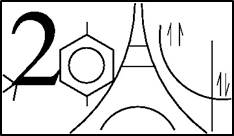Understanding the relation between protein flexibility, stability and function remains one of the most challenging questions in biophysical chemistry. Proteins need to be flexible to facilitate substrate binding but also locally rigid to sustain substrate specificity. Exemplary cases are thermophilic enzymes from archaea and bacteria, that are stable and functional at elevated temperatures but generally lack activity at ambient conditions. Therefore, their thermal stability has been correlated to enhanced mechanical rigidity, a view that was however recently questioned.
We recently saw in an in silico comparison between the hyperthermophilic G-domain of Ef-1a and its homologous mesophilic G-domain from Ef-Tu, that the weak spot of the mesophile where the unfolding begins is located in the switch I region, a key spot for both GTPase catalysis and long-range allosteric transition upon ribosome binding. In the hyperthermophilic homologue, the insertion of two small helices in the same region, induces an overall higher flexibility to the protein that contributes in its better capability to absorb thermal excitation without unfolding, at the cost of a non-optimized catalytic activity at ambient T.
Here, we present an alternative route to the same issue. Using MD simulations, we compare two homologous tetrameric malate dehydrogenases, a mesophile and a thermophile with optimal temperatures for the organisms at 32 C and 55 C, respectively. While when taken isolated, the monomers show comparable flexibilities, once the tetramers are folded the thermophile gets substantially rigidified. In particular we observe an anchoring of the loop close to the active site with possible effect on substrate binding.
We see that not only there is no unique mechanism for increasing protein thermostability, but sometimes we can have opposite routes to the same end. It is however generally accepted that evolution from thermophilicity to being optimal at ambient T, has worked towards optimizing catalytic activity.

 PDF version
PDF version
